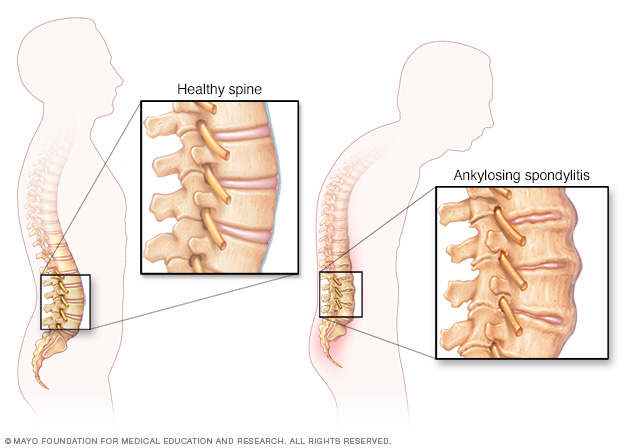Definition of AS
Ankylosing spondylitis (AS) is a chronic systemic inflammatory disease. It predominantly affects the axial skeleton and sacroiliac joints. AS is also the prototypic disorder of a spectrum of diseases called spondyloarthritis (SpA). AS is considered as axial SpA due to the presence of inflammation of the spine and sacroiliac joints. Clinically symptomatic patients with AS who lack radiographic sacroiliitis are classified as as having nonradiographic axial SpA (nraxSpA) (Rudwaleit 2009). Other diseases included under SpA are axial SpA, peripheral SpA, undifferentiated SpA, reactive arthritis, psoriatic arthritis and enteropathic arthritis/spondylitis associated with inflammatory bowel diseases (IBD). These subsets of SpA share a common genetic background and clinical features (Amor 1990, Bakland 2013 and Rudwaleit 2009). AS is the most common type of SpA (Bakland 2013).
Prevalence of AS
The incidence of AS ranges from 0.5-10.6 per 100,000 people (Bakland 2013). The overall global prevalence of AS is 0.1% – 10% but it is different in various geographic regions of the world (1, 2 Amor 1990, Bakland 2013). The highest prevalence of AS is reported among the Haida tribe of British Columbia, Canada (Gofton 1984). The disease is also more common in Caucasians. In a recent study linked to the NHANES survey, up to 1 % of the USA population were found to be affected with SpA and this was comparable to the prevalence of rheumatoid arthritis (Reveille 2012). A recent systematic review of 36 studies concluded that AS had a mean prevalence (per 10,000 population) of 31.9 in North America, 23.8 in Europe, 16.7 in Asia, 10.2 in Latin America and 7.4 in Africa (Dean 2014). The estimated number of cases inEurope and Asia was 1.30–1.56 million and 4.63–4.98 million, respectively (Dean 2014).

Ankylosing Spondylitis

